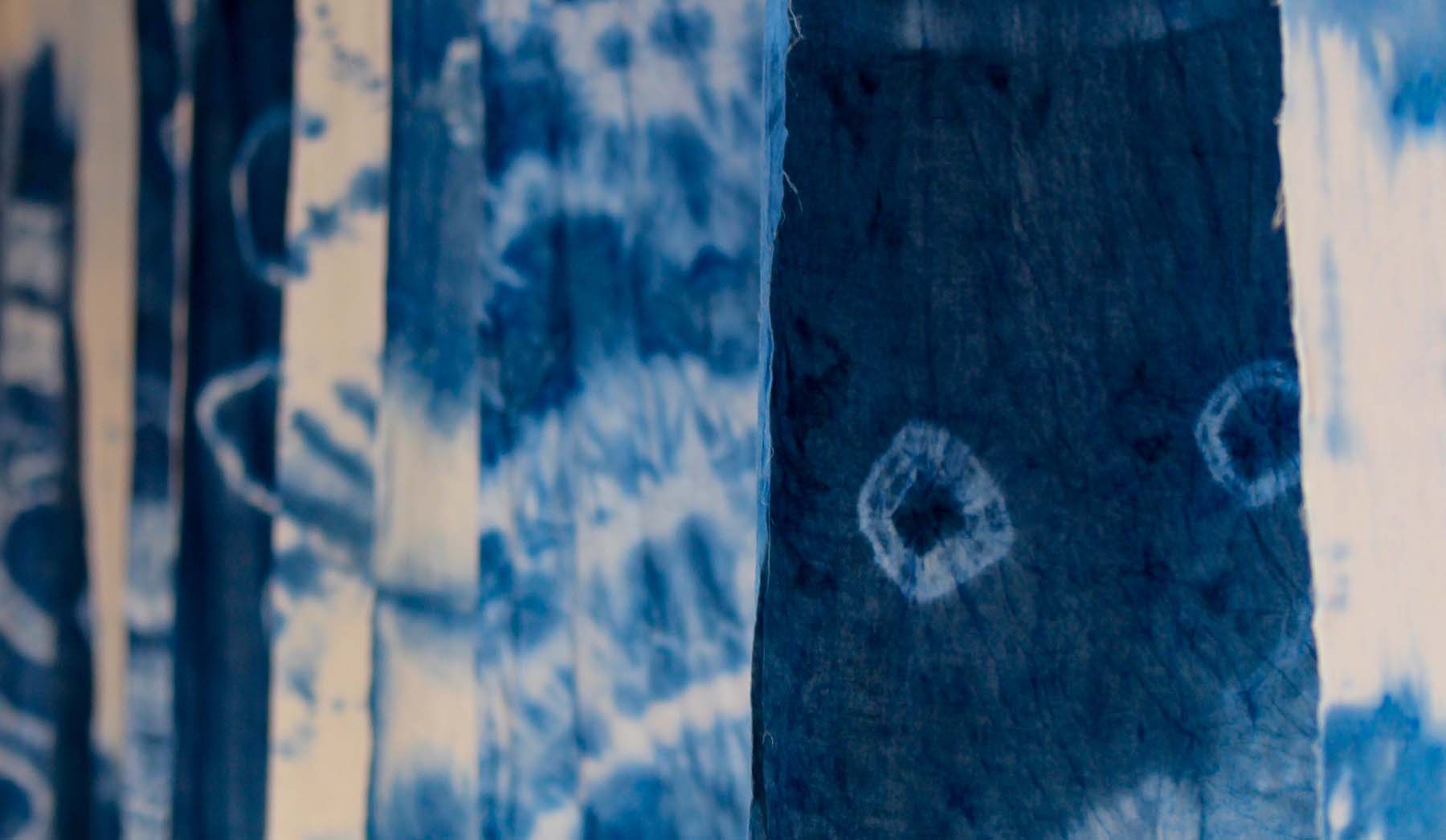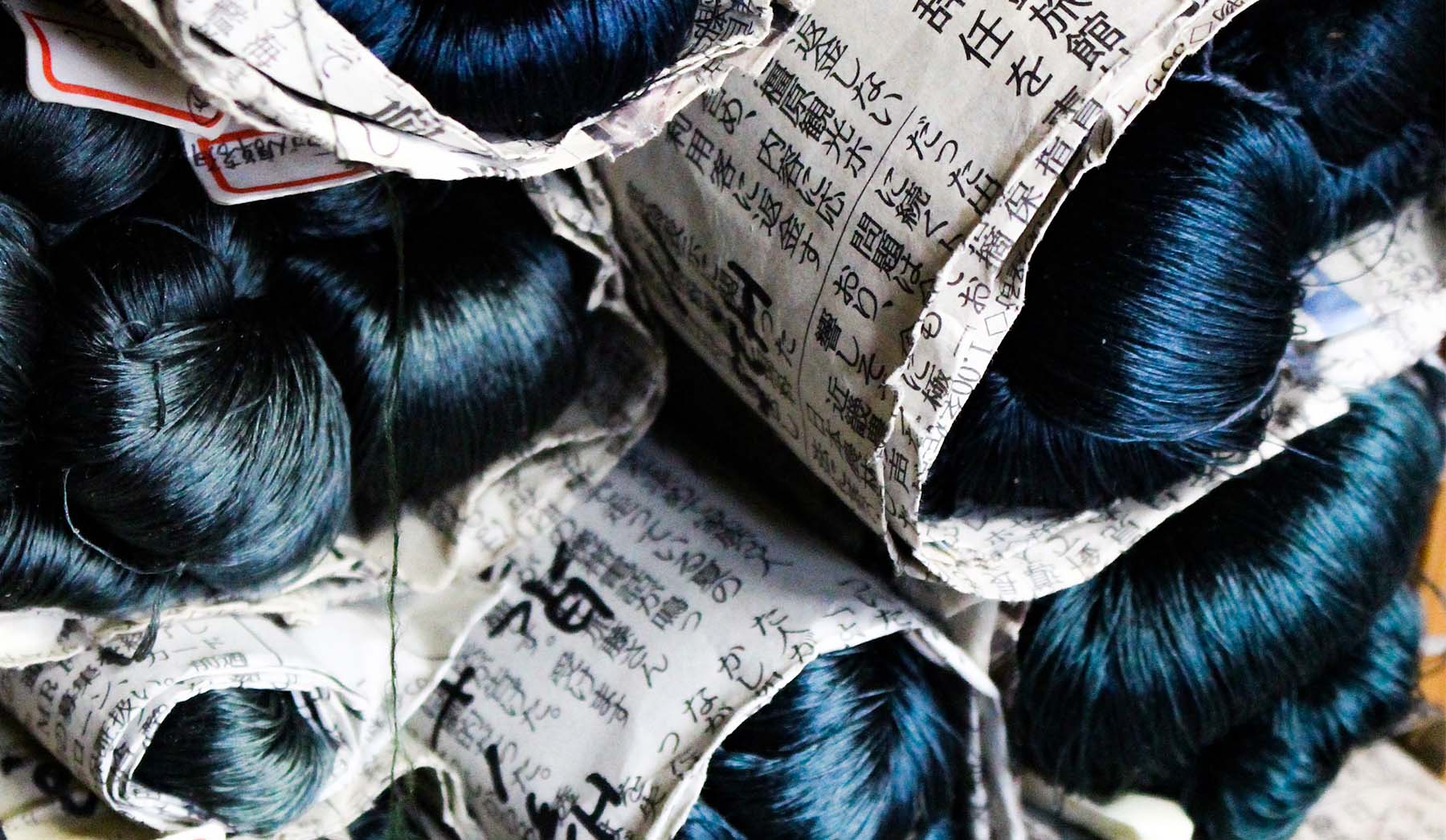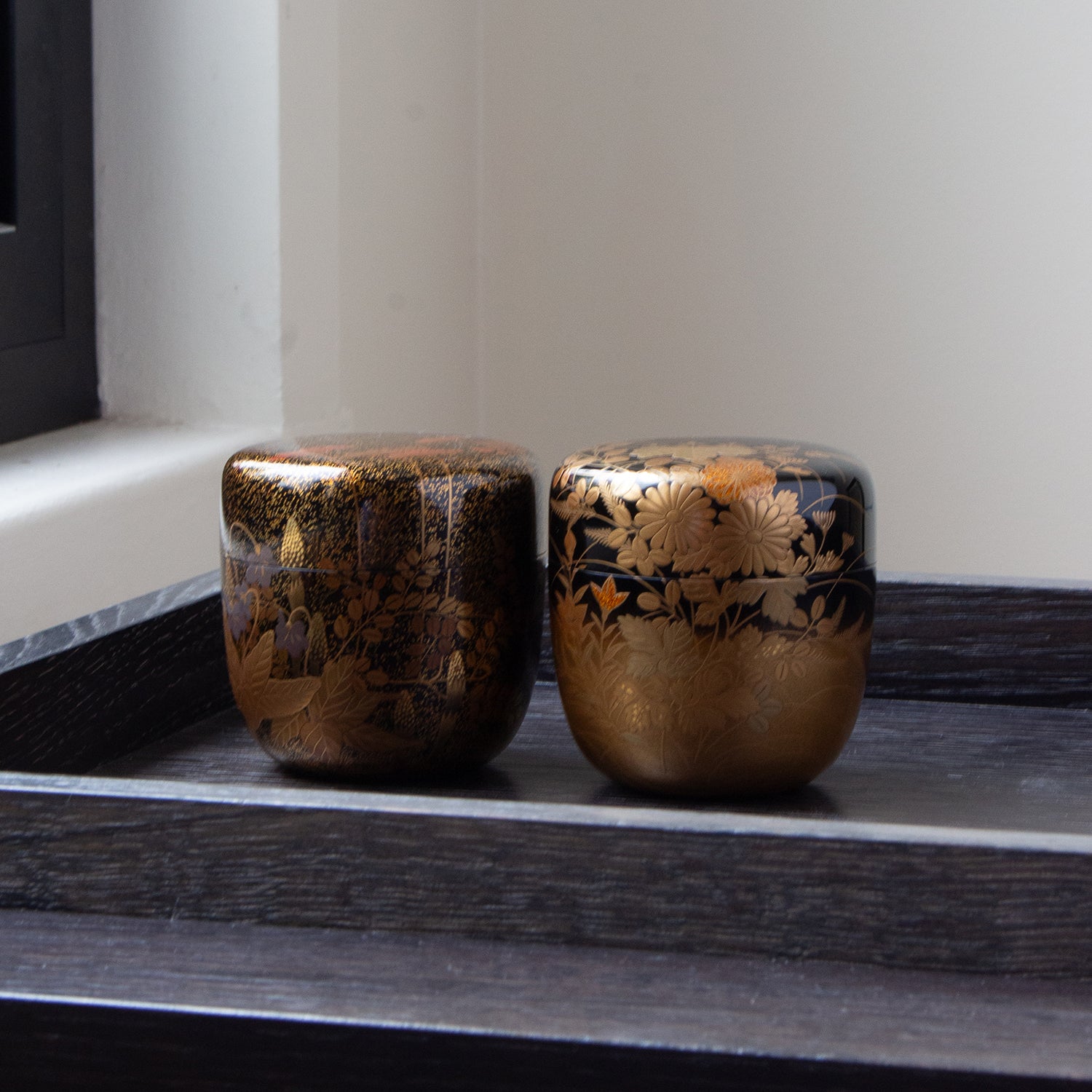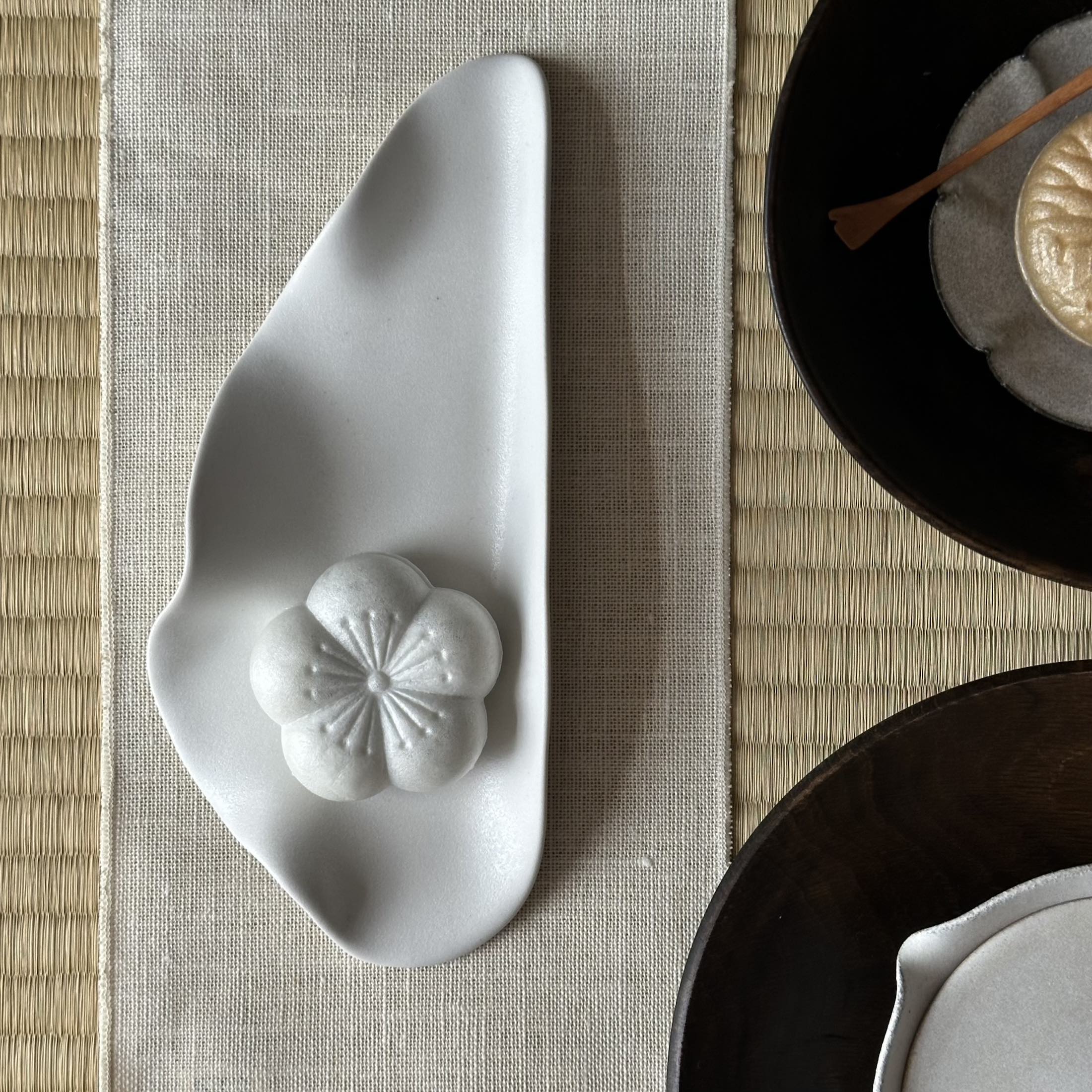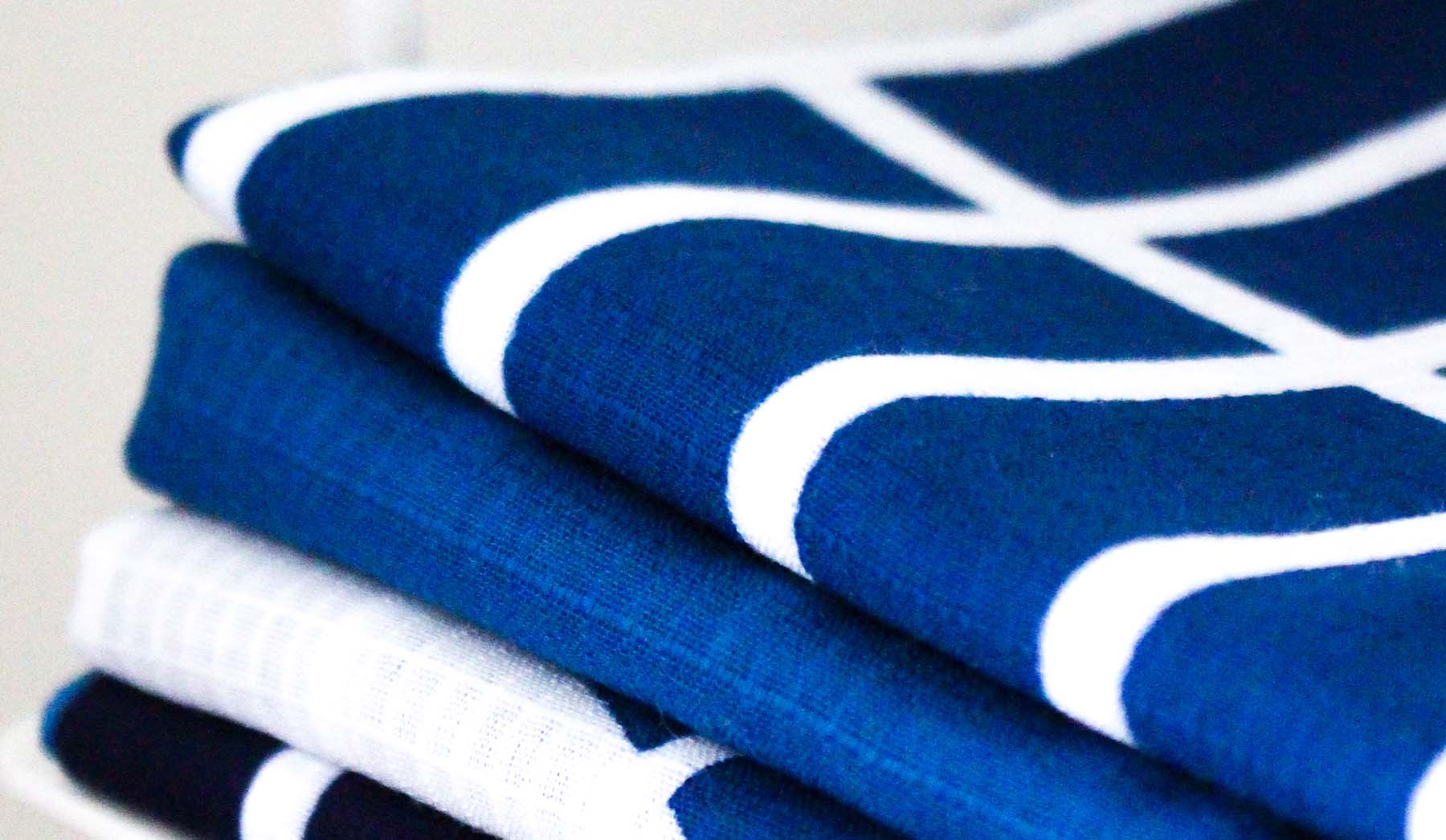
Japan: the art of chusen, a unique textile print
DURING MEIJI PERIOD, THE BEGINNINGS OF JAPANESE CHUSEN DYEING
Summer kimonos yukata and tenugui dyed in brightly coloured patterns are textiles that appeared in Japanese daily life during the Meiji period (1866-1912). A wide variety of fabrics were offered on the market thanks to the birth of a stencil dyeing technique unique to Japan: chusen.
This technique allowed for the first time a larger scale production, while magnifying craft work, each piece being entirely made by hand, bringing high quality to the textile products and above all characteristics that can only come from manual work: the gradations of colour and the slight variations thus give a strong personality to the textiles.

MARUKYU SHOTEN, JAPANESE CHUSEN CRAFTSMEN SINCE 1899
Founded in Nihonbashi (Tokyo) in 1899, Marukyu Shoten (through its brand Shinedozome) is one of the great historical houses linked to chusen, which continues to produce a superb range of chusen textile products while preserving this Japanese craft traditions from the 19th century. Seasonal, traditional or contemporary designs, colour variations, revisiting old patterns, collaborations, the house is one of the most dynamic in its segment and has succeeded in anchoring the brand in the 21st century.

JAPANESE CHUSEN, A TRADITIONAL MANUFACTURING PROCESS ANCHORED IN MODERNITY.
The dyeing process of chusen begins with a paper pattern that is used to apply a dye-resistant paste, called resist, to a piece of fabric. The pigment does not seep into the areas covered by the resist, which means that they are not dyed.

Once this stage is complete, the pattern is removed and the fabric is folded to reveal a new section on top. The pattern is positioned on this new section of fabric, and the resin is applied once more. This process is repeated until 20 to 40 layers of fabric are created. The resin is then applied to create barriers that separate areas where a different colour is desired.
Then, using a yakan, which looks like a watering can, the pigment is poured into the areas marked by the dams according to the pattern. A vacuum pump that works from underneath the fabric is used to draw the dye through all the layers at the same time. The fabric is turned over and the same process is repeated on the other side. This is what gives chusen textiles their distinctive dyed look, with no wrong side or right side.

The fabric is then washed with water to remove paste and pigment residues, and then dried outdoors on structures over 10m high - a great visual spectacle to see these long strips of textile floating in the wind! The textile strips are then cut to size, either to make tenugui (very versatile 40cmx110cm textiles) or yukata (light kimono).
Limited edition Japanese tenugui: the superb Marukyu Shoten x Pauline Androlus collaboration
The series of Japanese tenugui "Échappées Belles", which includes 4 different designs, was imagined by Pauline Androlus (Paris) and produced by Marukyu Shoten (Tokyo) as part of the Edo Tokyo Kirari project.

Japanese tenugui are light cotton textiles with a very versatile use. This series is exceptional, its design was conceived by Pauline Androlus, a talented French interior and object designer, and it was made by the craftsmen of Marukyu Shoten using the complex handmade technique of chusen, printed on both sides of the fabric.

These tenugui are made of very light cotton, dry extremely fast, and time gives them even more softness and depth. Their size is typical of Japanese tenugui: a rectangle of 40cm by 110cm, allowing a multitude of uses.
The pattern is inspired by windows and shoji that open up and invite to daydream, an abstract painting sublimated by the gradations of blue and the white weave of the fabric. Each piece is unique and forms a contemplative work of art with a strong visual impact, either on its own or grouped with the other motifs. Framed or held by wooden edges, placed side by side, these Japanese tenugui displayed on a wall offer a decoration of exceptional originality and beauty. But they have many other uses: table runner for a striking contemporary contrast; elegant furoshiki for wrapping gifts or objects; light scarf or headband tied in the hair or, of course, beautiful napkins. See textiles from the Maryuku Shoten x Pauline Androlus collaboration



